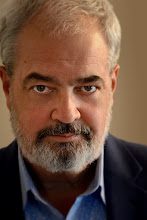Last month I finished up the chancellor's annual report and I really wanted to share my experience using chroma-key on this project. The designer preferred I wait until the printed piece has been distributed. Well, the book is out and I can now show and tell. We needed a photo to represent a story about an alumnus that won a Disney competition involving the engineering design of Soarin' Over California at Epcot and how she recently helped a group of NC State students win high Disney honors in another Imagineering design competition. The story is about about creativity so we wanted an image that spoke to the heart of the story, not just a group photo or portrait - so the idea of a student wearing Mickey Mouse ears while flying over a California landmark was hatched. Chroma-key has been around for a long time in the video world and it's use is beginning to take hold in the still world. Affordable software had been the hold up as far as I was concerned, but I stumbled across PhotoKey and was blown away by how simple it was to use. I tried out the demo and immediately purchased within 5 minutes. You can't beat $109 for something that can cut hours off a project work time. Wow.
We have a green screen wall in Studio A of the Creative Services TV Studio (where I learned chroma-key usage in television production classes back when I was an undergrad here), so I was able to use it for testing and the final shot. I borrowed one of Jim Alchediak's students after class, threw a pair of mouse ears on her head, turned on some fans to blow her hair, had her lie on top of a desk (pretending to fly) - and viola! - I had part one of my first chroma-key shot in the bag.

Art director Mike Quinlan chose a beautiful Golden Gate bridge photo from iStock that gave us a nice, easily recognizable California landmark. The image had just the right about of warm sunrise glow on the horizon, deep blue sky and a well-lit bridge. I love the bridge light reflection on the bay.

Using the PhotoKey software, I merged the two images into one. The software allows you to manipulate, re-size, rotate and generally screw around with both images until you get the result you want. We made a few adjustments to the flying student's location on the bridge photo to make room for placement on the page (ie the gutter) and the final image was knocked out way quicker than if I had to cut her out by hand in Photoshop.

Since getting PhotoKey and discovering the wonders of green screen, I have used several more times. I have purchased a 10'x20' chroma-key muslin and plan on using it for all my headshots. Being able to choose between whatever background a client will need in the future will be a great asset to have.
And other than having to see that garishly green piece of Hulk colored fabric hanging in the studio every day, it has been an awesome addition to my photography arsenal.


No comments:
Post a Comment